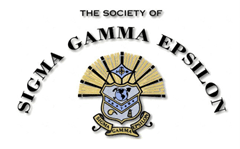Abstract
Since 1980, numerous billion-dollar disasters have affected the Northern Plains of the United States, including nine droughts and four floods. The atmospheric environment present during precipitation events can largely be described by the presiding air mass conditions since air masses characterize a multitude of meteorological variables at one time over a large region. The goal of this research is to add knowledge to current understandings of the factors responsible for precipitation in the Northern Plains through an assessment of synoptic air mass conditions. The Spatial Synoptic Classification is used to categorize 30 years of daily surface air mass types across the region alongside precipitation from the United States Historical Climatological Network. Annual and seasonal air mass frequencies are examined for all precipitation events. Precipitation days are also examined by intensity. Results indicate that the Transitional air mass, associated with changing air mass conditions commonly related to passing fronts, is not the leading producer of rainfall in the region. All moist air mass varieties are generally more dominant during precipitation events and the Moist Moderate (MM) and Moist Polar (MP) air masses are frequently responsible for half of all rainfall in the region. MM and MP tend to be particularly prominent during the winter season. The MM and Moist Tropical air masses dominate around 65% of summer precipitation events. Interestingly, there is a tendency for precipitation while dry air masses are present to the north and west within the study region.
Recommended Citation
Baum, Anthony; De Pasquale, Richard; and Godek, Melissa L.
(2014)
"Air Mass Frequency During Precipitation Events in the Northern Plains of the United States,"
The Compass: Earth Science Journal of Sigma Gamma Epsilon:
Vol. 86:
Iss.
1, Article 1.
DOI: https://doi.org/10.62879/c12387196
Available at:
https://digitalcommons.csbsju.edu/compass/vol86/iss1/1

Author Keywords
atmospheric environment, droughts, floods, meteorology, transitional air mass, U.S. Historical Climatological Network, moist moderate air masses, moist polar air masses, moist tropical air masses, spatial synoptic classification